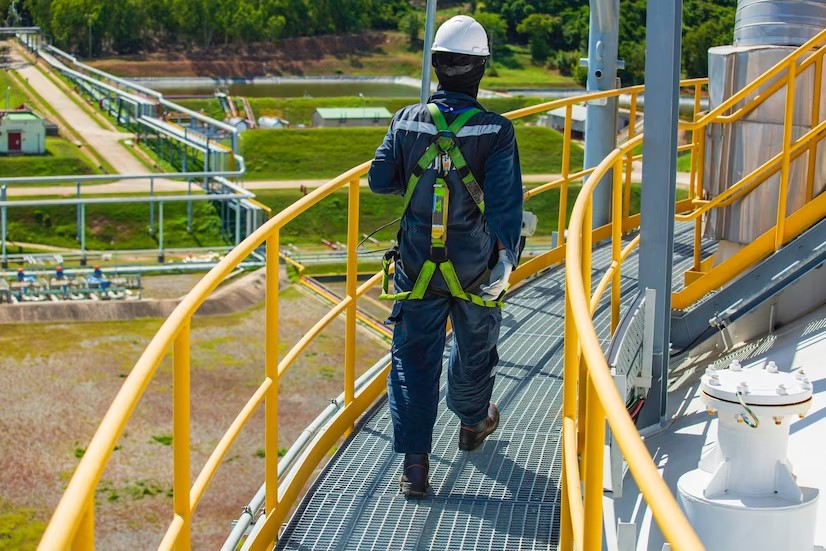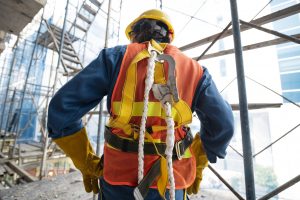Definition & Identification of Health, Safety, and Environment Critical Equipment and Systems (HSECES)
- October 19, 2023
- Posted by: Velosi Author
- Categories: HSE, Insights

Introduction
HSECES (Health, Safety, and Environment Critical Equipment and Systems) are significant factors within any component of an installation or structure, equipment, and system, they refer to any failure that could cause, prevent, contribute to, or limit the effect of a major hazardous event. The purpose of HSECES is to prevent or limit the effects of a hazardous accident. Moreover, it plays an important role in protecting people and the environment from hazards such as fire, explosions, and the release of toxic gases or fumes. They also contribute to ensuring safe and reliable operations within industries.
What is HSECES – Definition?
Health, Safety, and Environmental Critical Equipment Systems (HSECES) is a complex system that acts as a backbone of safety in several different industries and holds a powerful business approach.
These special rules prevent major accidents and other disasters from happening in any construction site/workplace. They can be made through software or manual setup programs for maintaining a systematic yet safe working environment.
What are Performance Standards in HSECES?
The Performance Standards (PS) provide a professional commitment that the Health, Safety, and Environment Critical Equipment and Systems (HSECES) will execute their designated functions effectively. This ensures the system’s reliability, availability, and resilience in the event of a major accident. This in turn guarantees the performance is integral to maintaining safety standards and operational efficiency.
Four Different Types of Performance Standards in HSECES
- Functional performance standards: These types of standards define how a system or component must perform in order to meet its intended purpose.
- Reliability performance standards: They particularly define the probability that a system or component will perform its intended function when required.
- Maintainability performance standards: These types of standards focus on maintaining a system or component in a condition where it can meet its desired function.
- Testability performance standards: These standards portray how easy it is to test a system or component to verify its operational efficiency.
Other types of performance standards for improvement include:
- Historical performance standards
- Target performance standards
- Competitors’ performance standards
- Absolute performance standards
The following are nine important examples of HSECES:
- Hydrocarbon containment
These are the systems that prevent the release of hazardous substances like oil or chemicals, minimizing environmental damage in case of a spill or leak.
- Overpressure protection
Equipment that safeguards against excessive pressure in vessels or pipelines, preventing explosions and leaks.
- Emergency Shutdown Systems
Automated systems that rapidly shut down operations during emergencies to prevent further risks or damage.
- Fire and Gas Systems
These are known as detection and suppression systems that detect fires and gas leaks, triggering alarms and suppression measures for safety.
- Flare and Blow Down Systems
Responsible for safely releasing excess pressure or gas in controlled ways, reducing the risk of explosions or uncontrolled emissions
- Emergency Power
Backup power sources that ensure critical equipment and systems continue to operate during power outages or emergencies.
- Escape Routes
Designated pathways and exits that allow personnel to evacuate safely during emergencies such as fires or gas leaks.
- Permit to Work Systems
These are relevant procedures and controls that ensure only authorized personnel can perform specific tasks, reducing accidents and hazards.
- HVAC System
Heating, Ventilation, and Air Conditioning systems that provide a safe and comfortable environment with perfect air quality.
Significance and Identification of Health, Safety, and Environment Critical Equipment and Systems (HSECES)
HSECES are rules that act as the silent protectors preventing accidents, injuries, and other environmental harms. Without such systems, there will be more room for potential chaos, accidents, and ecological destruction.
Seven Major Principles and Methods of Hazard Identification
- Make sure to properly identify all Major Hazards that have taken place in your facility through the safety reports before taking any actions against them.
- Check out safety barriers and build solid rules to limit them.
- Be sure to have a workshop in the presence of technical teams to find out important safety and environmental things under each organization that deals with Major Accident Hazards (MAH).
- Have a proper setup of rules and data that talks about the dangers of (MAH). This will help find all major issues on the site that might disturb safety and security during your working hours.
- Ask team members about all the things they experience while working in the facility. Make sure the analysis is led by an expert.
- Make sure the team members have a special security number to tell you about a certain kind of situation at the perfect time.
- Finally, create a list that has all these important safety and environmental things in one place to maintain safety, security, and other factors in balance.
Major Accident Hazards (MAH) and Why You Need to Identify Them?
Major Accident hazards are known as uncontrolled occurrences and consequences that lead to safety and performance malfunctions at any working site. Here are the major issues you might come across.
- Spills and Explosions: Leakage of dangerous liquids or gases that can catch fire, explode, or harm people with toxic fumes.
- Building Collapse: When a structure breaks and can lead to more parts falling apart, causing more damage.
- Oil Well Blowouts: Uncontrolled release of oil or gas from wells, which can cause explosions.
- Ship Collisions: Ships crashing into platforms or docks where explosive, flammable, or toxic stuff is handled.
- Deadly Incidents: Fires, explosions, or toxic chemical leaks that cause death or serious injuries on or near installations.
- Work Accidents: Accidents during work that result in death or serious injuries on or near installations.
Conclusion
In the oil and gas industry, safety, security, health, and sustainability play an important role. Therefore, HSECES are the precious rules you must know and abide by during operations to keep a safe and sound environment for everyone. This will in turn lead to organizational growth and productivity through reliable operations at the work place.
Please contact us for more information and assistance.



